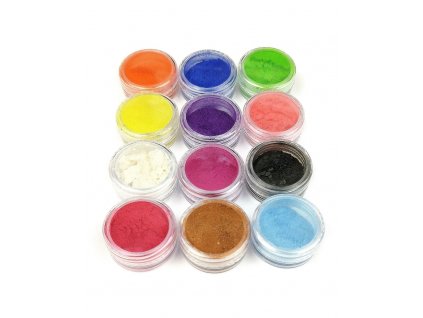Taba squishy gel
Discover the magic of making your own squishies! This two-component silicone gel is the foundation for creating soft, flexible and sticky products. It has a simple 1:1 mixing ratio and is easy to work with. In just a few hours, you'll be holding a finished, soft squishy product made in the comfort of your own home.
There are two package sizes to choose from:
- 200 g (contains 100 g of component A and 100 g of component B);
- 400 g (contains 200 g of component A and 200 g of component B).
Gel colour: milky
You can mix powder (metallic and metal powders) and liquid colours from our range, glitter, or create multicoloured layers – the result is always unique. Will you start with a smaller dose, or create a whole squishy family right away?
Don't forget to add petroleum jelly to your basket to grease the mould so that the gel doesn't stick to it, zip bags for the finished products, flocking powder and decorative balls for the squishy bag. You can find everything in our special category.
You can find detailed instructions for making it below. 👇




Features:
- Two-component gel for making squishies;
- Easy 1:1 mixing ratio;
- Option to add colours and effects (glitter, colour layering);
- Suitable for use with silicone moulds;
- Multiple package sizes to suit your needs.
How many squishies will it make?
(Rough estimate, depending on the size of the mould)
- 200 g pack → 5-6 medium squishies;
- 400 g pack → 11-12 medium squishies.
Instructions for use:
Mould preparation:
Thoroughly clean the silicone mould and ensure it is dry. You can wash the mould with washing-up liquid and water, or remove any dust with adhesive tape. Apply a very thin layer of petroleum jelly to all the nooks and crannies of the mould using a cotton bud, brush, or gloved finger. Do not leave fingerprints or a noticeable texture in the petroleum jelly, as both will be visible in the finished product. Don't forget the edge of the mould, which the poured gel will touch.
Mixing the material
The mixing ratio for squishy gel is 1:1. You can measure the ratio in millilitres or grams. For the best results, we recommend using scales. Measure one component into a cup first, then the same amount of the second component. Mix slowly from the sides and bottom for 3-5 minutes. Avoid incorporating air by kneading; do not lift the spatula too high when mixing. After mixing the gel, you can add colour and glitter. Use a small amount of colour on the tip of the spatula, 1-3 drops of liquid colours depending on the amount of gel mixed. Mix the colour very well so that there are no unmixed pieces left in the gel. The glitter will sink to the bottom of the mould, so only use a small amount.
Pouring into the mould
Immediately after mixing, pour the gel into the mould, don't delay the pouring. Gently tap the mould on the table and with your fingers on the sides of the mould to release any bubbles and fill in the details of the mould.
If you want to make a multi-coloured cast with separate colours, mix the gel only for the first layer and pour it into the mould. Prepare a toothpick and check the surface of the cast regularly. When a firmer coating forms that sticks to the toothpick, and when lifted, the entire coating lifts with the toothpick, it's time to mix and pour the second layer. This correct timing allows both layers to bond together.
Curing and removing from the mould
Allow the gel to cure for 2-3 hours. Prepare a bowl with washing-up liquid and water, immerse the mould in it, and gently start peeling the mould away from the squishy with your fingers. Do not use any tools or force, or pull excessively on the product or mould. This could lead to damage to the product. By gradually peeling back the product, release it on all sides, then gently push the mould out from the other side and gradually peel the product away from the bottom of the mould. Wash the product in washing-up liquid and water to remove any remaining petroleum jelly and allow to dry on a plastic bag. Do not dry with a towel or paper towels, as they will leave pieces of paper or fibres on the squishy.
Never wash the cups with water. Wipe out any remaining liquid gel with a paper towel, never pour it down the drain. If the remaining silicone hardens in the cup, simply peel it out and throw it away.
Surface finishing, decoration and packaging
If you want to colour the product, we recommend mixing a small amount of gel, colouring it and using it to colour the details (you may need to repeat the process to achieve a richly coloured result). This is the most durable method. You can also use acrylic paints, eye shadows or mica powder colours. However, this solution is not the most durable and you may need to renew the colour over time.
The product can be covered with flocking powder attached in the set. You can sprinkle it on the product, gradually 'soak' the product in it, or apply it in a thin layer to the product using a brush.
You can play with the product as it is, but this carries the risk of rapid damage and dirt sticking to it. We recommend placing it in a zip-lock bag. If you are inserting squishy without flocking powder, the insertion may be a little more difficult. You can help yourself by inserting it under water. Then let the bag dry for several hours and do not close it so that no water remains in it.
Add glitter, beads, or other decorative elements to the bag.
Be the first who will post an article to this item!
Be the first who will post an article to this item!












